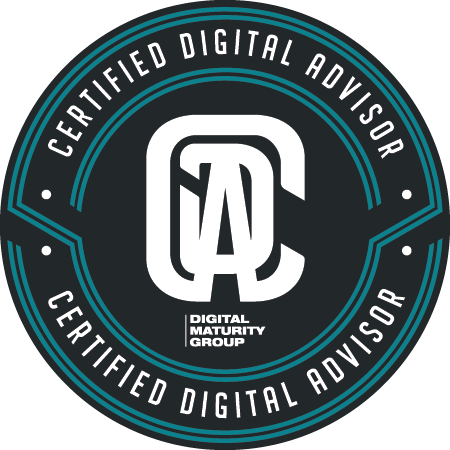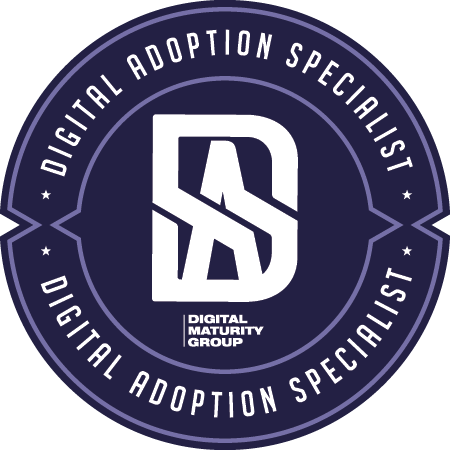Digital adoption has become a crucial aspect of business success in today’s fast-paced world. Organizations are constantly striving to implement effective digital adoption strategies to stay ahead of the competition and meet the ever-changing needs of their customers. However, the true measure of success lies in how well these strategies are executed and the impact they have on the organization. In this article, we will explore the key metrics and indicators that can help you measure the success of your digital adoption strategy.
In today’s digital age, businesses are leveraging various technologies and digital tools to streamline operations, enhance customer experiences, and achieve their strategic objectives. However, simply implementing these digital solutions is not enough. The success of a digital transformation initiative relies on how well employees and users adopt and utilize these technologies. This is where a well-defined digital adoption strategy comes into play.
Defining Digital Adoption Strategy
A digital adoption strategy encompasses a set of plans and actions aimed at ensuring the seamless integration and utilization of digital tools within an organization. It involves identifying the needs and expectations of users, providing comprehensive training and support, and continuously monitoring and optimizing the adoption process.
Key Metrics for Measuring Digital Adoption Success
To effectively measure the success of your digital adoption strategy, it is essential to track and analyze relevant metrics. Here are some key metrics to consider:
- User Engagement Metrics: User engagement metrics help gauge the level of user interaction and involvement with digital tools. These metrics include:
- Active Users: The number of users actively using the digital tools or platforms.
- Session Duration: The average time users spend interacting with the tools during each session.
- Click-Through Rates: The percentage of users who click on specific features or functionalities within the tools.
- Training and Onboarding Metrics: Training and onboarding metrics assess the effectiveness of your training programs and how well users are adapting to the digital tools. These metrics include:
- Training Completion Rate: The percentage of users who successfully complete the training programs.
- Time to Proficiency: The time it takes for users to become proficient in using the tools.
- User Feedback: Feedback from users regarding the clarity, relevance, and effectiveness of the training materials.
- Adoption and Utilization Metrics: Adoption and utilization metrics focus on measuring the extent to which digital tools are being used and integrated into daily operations. These metrics include:
- Feature Adoption: The percentage of users who actively use specific features or functionalities within the tools.
- Process Efficiency: The improvement in operational efficiency resulting from digital tool adoption.
- Integration Rate: The level of integration between the digital tools and existing systems or processes.
- Customer Satisfaction Metrics: Customer satisfaction metrics help assess the impact of digital adoption on customer experiences. These metrics include:
- Net Promoter Score (NPS): A measure of customer loyalty and willingness to recommend the organization’s products or services.
- Customer Support Interactions: The number and nature of customer support interactions related to digital tools.
- Customer Feedback: Feedback from customers regarding their experiences with the digital tools.
Analyzing and Interpreting Data
Once you have collected the relevant metrics, it is crucial to analyze and interpret the data to gain actionable insights. Look for patterns, trends, and correlations between different metrics to understand the overall impact of your digital adoption strategy. Use visualization techniques such as charts and graphs to present the data in a clear and concise manner.
Challenges in Measuring Digital Adoption Success
Measuring the success of a digital adoption strategy can be challenging due to various factors. Some common challenges include:
- Data Accessibility: Ensuring that the necessary data is captured and readily available for analysis.
- Data Quality: Ensuring the accuracy, completeness, and consistency of the data.
- Benchmarking: Establishing meaningful benchmarks and comparisons to evaluate the success of your strategy.
- Subjectivity: Dealing with subjective metrics such as user feedback and customer satisfaction.
Best Practices for Effective Measurement
To ensure effective measurement of digital adoption success, consider the following best practices:
- Define Clear Objectives: Clearly define your goals and objectives for the digital adoption strategy.
- Select Relevant Metrics: Choose metrics that align with your objectives and provide meaningful insights.
- Regular Monitoring: Continuously monitor the selected metrics to track progress and identify areas for improvement.
- Data Integration: Integrate data from various sources to gain a holistic view of digital adoption.
- Iterative Approach: Continuously refine and adjust your measurement approach based on the insights gained.
Conclusion
Measuring the success of your digital adoption strategy is vital to ensure its effectiveness and make informed decisions for improvement. By tracking key metrics related to user engagement, training, adoption, and customer satisfaction, you can gain valuable insights into the impact of your strategy and identify areas for enhancement. Remember to analyze the data, overcome measurement challenges, and implement best practices to maximize the effectiveness of your digital adoption efforts.
Frequently Asked Questions (FAQs)
- What is digital adoption? Digital adoption refers to the process of fully integrating and utilizing digital tools and technologies within an organization to achieve business objectives.
- Why is measuring digital adoption success important? Measuring digital adoption success helps organizations understand the effectiveness of their strategies, identify areas for improvement, and make data-driven decisions.
- How can user engagement metrics help measure digital adoption success? User engagement metrics provide insights into how actively users are interacting with digital tools, indicating their level of adoption and utilization.
- What role does training play in digital adoption success? Effective training programs and onboarding processes contribute to higher levels of digital adoption by helping users become proficient in using the tools.
- What challenges should organizations be aware of when measuring digital adoption success? Common challenges include data accessibility, data quality, benchmarking, and dealing with subjective metrics such as user feedback.
Book a Wingman Today for a Free Digital Adoption Plan Consultation
There is no doubt that technology is critical to your business today. Organizations need to adopt a digital-minded strategy to be able to thrive. But it’s essential that technology is deployed correctly. And more specifically, you shouldn’t start without a solid digital adoption plan in hand.
If you feel that your current technology infrastructure might be holding your organization back from reaching your goals and objectives, it may be time to invest in a digital adoption plan, like what Wingman can provide you. Contact us today and we can show you how to make your technology work harder and smarter for you by creating your own unique digital adoption plan.
PS: Secure your $15,000 Canada Digital Adoption Grant Today
Did you know you can get up to $15,000 grant towards your digital adoption plan…and an interest free loan up to $100,000 and a hiring subsidy to implement it? Ask us about the Canada Digital Adoption Plan and Boost Your Business Technology Grant. Wingman is an approved CDAP Digital Advisor partner of Canada’s Innovation, Science and Economic Development Canada. Only an approved CDAP Digital Advisor can help you access the CDAP grant to have your digital adoption plan get approved through the CDAP program.
Book a Wingman today to discuss how we can help.






